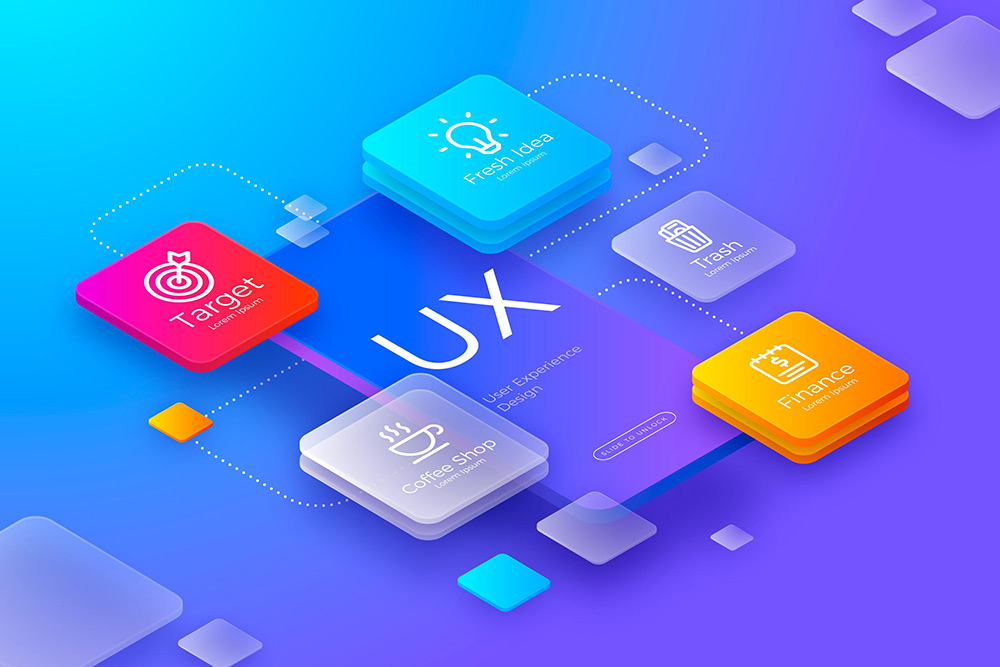How does User Experience (UX) influence SEO – what is most important?
Over time, the user experience on our website plays an increasingly important role in gaining significant positions in search results. If we want to record growing sales and acquire new customers, we must take into account the most up-to-date website positioning principles. How does User Experience affect SEO – what should we remember to achieve the best results?
- SEO is not as obvious as it may seem
- What is SEO and what is its purpose?
- What is UX and what is its purpose?
- What is the difference between UX, SEO, SXO and CRO?
- What impact does UX have on our position in search results?
- How does UX affect SEO and can it improve positioning results?
- UX in e-commerce – what is most important?
- How to create a website that will bring us business success?
SEO is not as obvious as it may seem
 Understanding the ever-changing principles of website positioning is a real challenge for most administrators of all types of websites. We can observe this by seeing repeated patterns of behaviour on the Internet, which – although they may have brought some benefits a decade ago – today even result in the exclusion of a website from natural search results.
Understanding the ever-changing principles of website positioning is a real challenge for most administrators of all types of websites. We can observe this by seeing repeated patterns of behaviour on the Internet, which – although they may have brought some benefits a decade ago – today even result in the exclusion of a website from natural search results.
That is why it is so important to constantly monitor SEO trends and adapt our website to current trends. For several years now, one of the most important factors influencing our position in search results has been user experience, i.e. user behaviour monitored by algorithms adapted for this purpose. Don’t just take our word for it Backlinko has provided us with a comprehensive list of the top Google Ranking factors for 2024, UX and SEO are in the top 8.
All this is aimed not only at providing valuable content but also at directing Internet traffic to those websites that are best adapted to efficient user service.
In this case, the term UX can be used to describe all activities aimed at providing our client with attractive content and efficient technical communication, regardless of the device he or she uses.
We are a professional SEO Company based in Cork offering highly effective SEO and UX services to companies throughout the country and internationally, contact us today for your SEO requirements!
What is SEO and what is its purpose?
What is SEO (Search Engine Optimization)? It is the optimization of a website in terms of the requirements of search engine algorithms and users, it forms a part of Search Engine Marketing, the main goal of which is to achieve high positions for key phrases related to the offer. This means that after entering a keyword, the user sees your website in the search results in high positions, e.g. in the top 3. However, top positions in search results do not mean that the user will become your real customer. To achieve this goal, positioning in Google SERPs should be supplemented with UX (User Experience) and CRO (Conversion Rate Optimization), i.e. optimization of the conversion rate. In this way, a new element important in SEO is created, i.e. SXO – Search Experience Optimization.
What is UX and what is its purpose?
 UX (User Experience) are activities aimed at keeping the user’s attention on the website and providing him with the best possible impressions (experiences) in the process of interacting with your website. If you don’t take care of UX in positioning, you may limit your potential to generate conversions. Thanks to User Experience, you allow users to better understand your website, service and products offered, thus making it easier for them to take advantage of the offer (convert). By investing in SXO, you increase the chance that a user will not only find your website on Google, and visit it but also become your customer.
UX (User Experience) are activities aimed at keeping the user’s attention on the website and providing him with the best possible impressions (experiences) in the process of interacting with your website. If you don’t take care of UX in positioning, you may limit your potential to generate conversions. Thanks to User Experience, you allow users to better understand your website, service and products offered, thus making it easier for them to take advantage of the offer (convert). By investing in SXO, you increase the chance that a user will not only find your website on Google, and visit it but also become your customer.
What is the difference between UX, SEO, SXO and CRO?
UX, SEO, SXO and CRO are four necessary elements of the online customer acquisition process, which when combined allow you to generate a return on investment in internet marketing. What is the difference between UX, positioning and CRO, i.e. conversion optimisation?
- SEO is the art of building website traffic
- UX is the art of user engagement on a website
- SXO is a combination of SEO and on-page activities that are intended to make it easier for the user to browse the website
- CRO is the art of transforming user-generated traffic into real customers and encouraging users to take specific actions
What impact does UX have on our position in search results?
 The algorithms analysing our website carefully monitor every move of users who visit it, giving it appropriate scores depending on the results obtained. The following User Experience and SEO elements are checked:
The algorithms analysing our website carefully monitor every move of users who visit it, giving it appropriate scores depending on the results obtained. The following User Experience and SEO elements are checked:
- The amount of time spent on the page to which the search engine linked
- Whether the user has further interacted with the website (for example, whether he or she followed a hyperlink)
- The amount of time it takes for the page to completely load
- The percentage of users who end their visit with a product purchase
A well-designed website should, first of all, meet the user’s needs and offer him a friendly interface, thanks to which he will receive exactly what he/she was looking for. In the context of increasingly intelligent indexing algorithms, there is no other way to succeed in SEO than creating a technically efficient website and quickly responding to changing user needs.
A few simple rules lead to success in UX, which translates into an improved position in search results. First of all, let’s focus on what visitors are looking for and display the most valuable content in the part of the website visible immediately after opening it.
An intrusive pop-up informing about a seasonal discount or the possibility of subscribing to a newsletter drastically increases the risk that the user will simply leave our website instead of looking for a way to turn off the pop-up. Therefore, let’s limit the number of visible elements to an absolute minimum, thus offering the recipient the essence of the most valuable content. In making this type of change, it is worth getting help from someone from outside. When planning our websites ourselves, we often thoughtlessly implement strategies that ultimately make the portal less attractive to the recipient.
When it comes to content – regardless of whether they are blog entries or product descriptions – let’s use simple, understandable language and avoid common phrases that have been used in the marketing world for years. By focusing on the simplicity and originality of the message, we increase our chances of keeping the user’s attention for longer. This fact is noted by the indexing algorithms, which results in an improvement in our Google ranking.
How does UX affect SEO and can it improve positioning results?
 UX and SEO are two elements of an online customer acquisition strategy that complement each other. How?
UX and SEO are two elements of an online customer acquisition strategy that complement each other. How?
- User Experience can improve positioning results – thanks to UX in SEO, users have a better experience of contacting the website and stay on it longer; this is a signal to Google’s algorithms that the website is valuable to visitors – perhaps thanks to this, your website will gain better visibility in SERPs (Search Engine Results Pages)
- UX in SEO helps users find the information they are interested in – a properly designed User Experience on your website allows users to find the content they need, regardless of whether they land on the home page or the product page on your website
- User Experience in positioning increases the chances of conversion – if your website is properly designed for user experience, it can make more people decide to convert on your website
- UX can convert users into repeat customers – many companies find it difficult to encourage customers to buy from their website again. If a user remembers a positive experience with your website or store, they may quickly decide to convert again if you contact them after the purchase
- That’s why many SEO agencies offer SXO services included in the price, even if they don’t call them that. Specialists propose changes to the website to make it easier for users to navigate through it
UX in e-commerce – what is most important?
Even the best SEO score will be of no use to us if our online store does not generate income. The basis for UX in e-commerce is to simplify the store structure as much as possible, especially if we are talking about the user’s path from interest in the product to payment. In the overwhelming majority of cases, mistakes in this section of the sales process result in our client choosing a more technically friendly competitor’s store.
An important element of every store is a well-implemented product search mechanism. Filters that anticipate user needs, a flexible search system for specific phrases, and finally an algorithm that suggests products that the user may like are the elements of our website that will generate traffic to our store in the first place.
However, the basis for effective conversion is a simple, fast and trustworthy payment system. Let’s do everything we can to make the “go to checkout” button visible and everything that happens after using it as smoothly as possible. A common mistake in this respect is the introduction of mandatory registration on the website for every buyer.
Such actions lengthen and complicate our client’s journey, generating additional problems such as a late account activation link or difficulties in finding the original login. The result is usually a search for a similar store that allows you to make purchases as a guest – without the need to register, providing the minimum amount of data needed to ship the product.
Let’s also make sure we have an efficient payment gateway, giving as many options as possible to pay for the order. Thanks to this, we can be sure that our customer will finalise his/her purchase quickly and conveniently, which will additionally create positive associations with our store.
How to create a website that will bring us business success?
 As we can see, in the era of intelligent indexing systems, UX and SEO are inextricably linked concepts. Our user’s journey and the time he or she spends on our website will directly determine our score in search results – and everything indicates that this tendency will only intensify over time.
As we can see, in the era of intelligent indexing systems, UX and SEO are inextricably linked concepts. Our user’s journey and the time he or she spends on our website will directly determine our score in search results – and everything indicates that this tendency will only intensify over time.
When designing or improving your website, remember to take into account the principles mentioned above and make sure that it is equally accessible and transparent on every device that your client may use – from a smartphone to a tablet to a desktop computer equipped with a large monitor. In this way, we will create a friendly place on the Internet to which our customers will not only be happy to return but will also be happy to recommend it to others.






